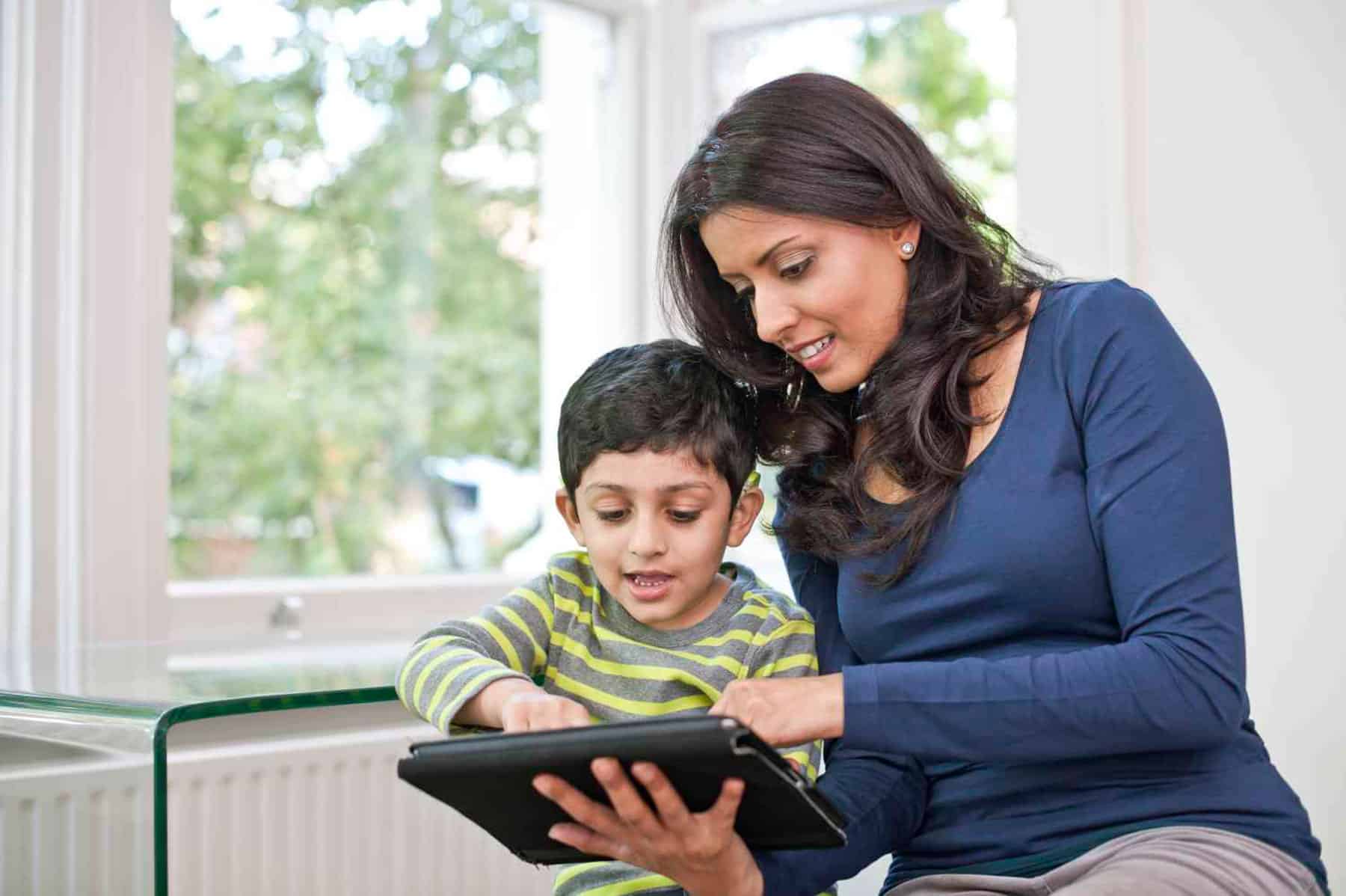MED-EL
Published Feb 12, 2016
Reading Books to Build Theory of Mind Skills

For a child, developing Theory of Mind skills is important, because these skills affect how well a person can communicate throughout their entire life.
Theory of Mind is when someone learns that they have their own thoughts, desires, and beliefs—and also recognizes that other people have their own thoughts, desires, and beliefs. It’s the idea behind “putting yourself in another person’s shoes.”
Want to help build your child’s Theory of Mind? A good place to start is with books.
Build Theory of Mind Skills
It can be straightforward for a child to learn some basic skills for interacting with people, because they can see other people interacting with them and each other in daily life. But what’s not so visible is what someone is thinking, feeling or believing. Listening and language skills alone aren’t always enough to understand the thoughts of others.
This is where developing Theory of Mind skills is necessary: teaching your child concepts like “think,” “know,” “believe,” “like,” and so forth can help them to learn to understand other people’s beliefs, feelings, and perspectives. These words are called ‘mental state verbs’ because they describe what’s going on in someone’s mind.
A great way to help your child develop these skills is through reading books together. Depending on your child’s age, here are some ways you can use books to help build their Theory of Mind skills:
For Young Children
From an early age children will start to participate in “joint attention:” knowing that someone else is focusing on the same object they are, or trying to get the other person to focus on an object they are interested in. Reading books with your child helps to encourage joint attention skills, because you’re giving them the chance to focus on the same book that you are, and in doing so you are also giving them a chance to learn language that is relevant to what you are both attending to.
Ideas with books:
- Sit close to your child so that they are near to the sound of your voice.
- Tell your child that you’ll read a book together—then grab the book, show it to your child, and repeat to them that you’ll read this book together. As you’re saying this look at your child, then at the book, and then back at your child. This will help to encourage their joint attention skills.
- Draw your child’s attention to specific pictures and describe what you see with sounds, words and sentences that you’d use in normal communication. All the while, point out what you’re talking about to help your child identify the pictures in the book.
- Brightly colored books with bold pictures are great to help grab their attention.
- Or, use books that your child can interact with, like touch-and-feel books.
- Choose books that have basic social language, such as a book that says “goodnight” or “good morning” to each character, to help your child learn about how people interact socially.
- You can also help build your child’s social skills by waving and saying “hello” to new characters as they appear in the story.
For Toddlers
Toddlers will be developing their language skills rapidly, and will have an increased awareness that each word they use or hear has a unique meaning. You can support their Theory of Mind skills by using mental state verb words about “likes,” “dislikes,” and “wants” while talking with your child. Also, try to use specific words like “remember”, “forget”, “guess,” “know,” and “surprise” that hint at what they or someone else might be thinking.
Ideas with books:
- Use lift-the-flap or peek-a-boo books. You can “guess” what is under a specific flap, or talk about “knowing” what’s under the flap if you’re re-reading the book. Here are some example sentences you could use:
- “Let’s guess what’s under the flap.”
- “I know what’s under there, do you? We saw it the last time, so we know what’s hiding there!”
- “I haven’t read this book before, so I don’t know what is under there.”
- “I think it might be a rabbit.”
- “What do you think it could be?”
- “Can you remember what’s under the flap? I’ve forgotten!”
- Choose books that have familiar routines or objects, like a book that talks about different familiar foods or activities. This will allow you to talk about them, and relate what’s in the story to what’s common in your child’s daily life. Bring up which ones you or your child like or dislike:
- “He’s eating an apple for breakfast. I like Your big brother also likes apples. Do you like apples?”
- “That boy is riding his bicycle. You like riding your bike on the weekend, too.”
- “I like to read my books on the weekend and so do you, but daddy likes to play tennis on the weekend.”
- “I don’t like the taste of onion.”
- Read books that talk about emotions, and talk with your child about the different emotions they experience about in their daily life, as well as the ones in the stories:
- Identify the emotions and say why the characters might be feeling these emotions. This will help your child to begin thinking about the emotions that others might be feeling, and reasons for why they might be feeling that way.
- Show your child that different characters in the story might have differing emotions at the same time. This shows how different people can perceive the same thing in different ways.
- “That little girl is crying. I think she feels sad because her brother won’t share his toys with her. What do you think? Her brother looks like he might be feeling He might not want to share his toys with his little sister. I wonder if they might like to play a new game together instead.”
Preschoolers+
Children who are of preschool age or older will have started to understand Theory of Mind concepts, so your goal is to help them further develop their skills. You can do this by applying the concepts to real-life situations.
Ideas with books:
- Choose books where there are different problems and solutions. Identify the problem, what has caused it (why you think it may have happened), and possible solutions. By talking about problems that are likely to occur in social situations, you can help your child understand that different individuals can have different perspectives on the same situation.
- Read books with jokes or silly stories, and talk with your child about why the stories are silly. Explain why we laugh at jokes, and why some people might find a joke funny while others might not.
- Point out the different facial expressions that characters have and try to guess what you think they might be feeling. And, ask your child what they think the character might be feeling.
- Try and relate events in the book to events in your child’s life.
- Ask your child, “The man looks sad. Can you remember a time when you felt sad? What made you feel sad? How did you feel better?”
- Talk about a situation when you felt a certain way, but someone else didn’t know your feelings. This will help your child to see that other people can’t see our thoughts and feelings.
- Before turning a page, have your child think about what has already happened.
- Ask your child to guess what might happen next.
- Then, make your own guess. It’s a good idea to guess something different than what your child did, because this will help show that different people can have different beliefs.
Want to help your child keep developing their Theory of Mind skills? Check out these two other blog posts that we’ve written:
- 5 different strategies to incorporate Theory of Mind concepts into what you’re saying.
- 4 more quick activities to develop your child’s Theory of Mind skills.
This post was written by Ingrid Steyns, a speech-language pathologist and Rehabilitation Specialist at MED-EL.
Subscribe to the MED-EL blog for more tips about building Theory of Mind skills, and more!
References
- Dunn J, Brown J, and Beardsall L. 1991a. Family talk about feeling states and children’s later understanding of others’ emotions. Developmental Psychology 27: 448-455.
- Miller, C. A. (2006). Developmental relationships between language and theory of mind. American Journal of Speech-Language Pathology, 15(2), 142-154.
- Symons, D. K., Peterson, C. C., Slaughter, V., Roche, J., & Doyle, E. (2005). Theory of mind and mental state discourse during book reading and story‐telling tasks. British Journal of Developmental Psychology, 23(1), 81-102.
- Taumoepeau M and Ruffman T. 2008. Stepping stones to others’ minds: maternal talk relates to child mental state language and emotion understanding at 15, 24, and 33 months. Child Dev. 79(2):284-302.
- Tomasello, M. (1995). Joint attention as social cognition. Joint attention: Its origins and role in development, 103-130.
- Westby, C., & Robinson, L. (2014). A developmental perspective for promoting theory of mind. Topics in Language Disorders, 34(4), 362-382.
MED-EL
Was this article helpful?
Thanks for your feedback.
Sign up for newsletter below for more.
Thanks for your feedback.
Please leave your message below.
Thanks for your message. We will reply as soon as possible.
Send us a message
Field is required
John Doe
Field is required
name@mail.com
Field is required
What do you think?
MED-EL


